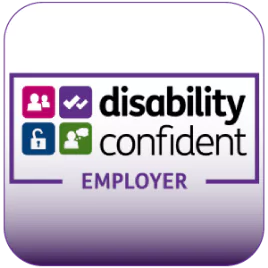The war for talent is well and truly back. There are more vacancies than ever before and almost every employer is having challenges hiring the people they need. The question seems to be growing in importance; how do you go about attracting talent in a new world of work?
Let’s be honest, it used to be much easier. A few decades ago you could offer someone a job and realistically they were yours, and most likely for a number of years. However, we now live in a world where the best candidates have multiple options available to them and organisations have to work hard to get the people they need, and even harder to get them to stay. The 23rd iteration of the Resourcing and Talent Planning Report – produced by the CIPD in conjunction with Omni RMS – revealed some examples of best practice for employers from the 1000+ HR professionals surveyed, that can enable organisations to get the people they need. And in a highly competitive market, employers need every marginal gain they can get when it comes to talent strategy and attraction.
Engaging with talent early
The report highlights that, in light of the talent shortage, the majority of organisations are recognising the importance of proactively widening their talent pools and engaging with potential new hires much earlier than they would have done traditionally. This is a key component of tackling the lack of people available in the job market and enables more effective strategic role mapping and management in the long term.
Transparent Pay
When it comes to pay it’s clear that in the current market conditions, not many firms can afford to pay the top rate, although a growing 36% of organisations (up from 29% last year) report using rising salaries as an important method to attract and retain their key people. Organisations must review what’s possible when it comes to pay, but also factor in the value of wider benefits packages. A key finding amongst a large majority of respondents to the Resourcing and Talent Planning Report was the role of transparency in the application process. Prospective candidates want clear information about the rewards on offer to them and are easily turned off by advertised roles that don’t show salary information. Ultimately, pay and benefits ranked as the number one method used as an attraction factor in the recruitment process, meaning employers need to review the salaries on offer within their connected sectors and benchmark accordingly.
The rise of hybrid working
Of course, one of the major shifts driven by the pandemic was the rise of flexible and hybrid working solutions. A large majority (69%) of firms advertise at least some jobs as open to flexible working, with wider trends suggesting the change is here to stay. Employers need to empower their current employees, and future hires, to request these opportunities and to promote them to new starters so that they know they form part of any potential employment contract.
Diverse hiring strategy
The next recommendation for talent attraction best practice in the report focuses on the reduction of diversity and recruitment biases within hiring strategies. More than 60% of responding organisations reported having a formal EDI strategy in place and over a third are currently described as ‘very active’ in efforts to develop more diverse talent pools. The recommendation here is that building a strategic and proactive approach to attracting and developing diverse candidates is of paramount importance, as is ensuring hiring and selection processes are free from any potential barriers. Once these processes and improvements have been put in place then employers should evaluate their recruitment activities on an ongoing basis to assess which are most effective in diversifying pools. Look to use data to measure any discrepancies with diverse progression through the selection process and take remedial action where this exists. Then employers can capture inclusion and diversity data at the application stage and formally evaluate if there is an adverse impact against any candidate group at every phase of the assessment process.
Where to source talent
The most effective methods of initially getting onto the radar of potential new hires was via corporate websites, with 47% saying they had initially made contact with talent through these platforms with external recruitment consultants, social media and advertising to existing internal and external talent pools coming in closely behind.
Look internally
Indeed, the development of inhouse talent and the potential for your existing people to move up the chain also shouldn’t be overlooked. It’s not just about attracting people to work for you, we all know it’s significantly less expensive – and better for morale – to develop from within. Investing in access opportunities was a key recommendation within the Report, meaning employers should focus on creating more routes into and through their organisation for talent. Many organisations are addressing hiring difficulties and broader skills shortages through L&D. Over 40% of firms reported upskilling existing employees to fill positions, nearly half use apprenticeship schemes or sponsor relevant professional qualifications while career-returner programmes are also growing in popularity. Clearly, valuing the merits and potential of existing workforces has never been more important to employers.
Finally, engaging with technology and integrating it within recruitment processes also appeared in the report as a growing trend amongst employers. 80% of organisations reported an increase in the use of process-driven technology from the pandemic, which should be seen as a benefit as it significantly improves accessibility for candidates, especially those from neurodiverse groups. However, the report also advises organisations to remember to provide a balance between technology and human interaction as an overt focus on the former can lead to potential new hires becoming disengaged with the hiring process.
While it may be challenging to implement all of these recommendations overnight, in a highly competitive market making marginal and seemingly minor shifts to your hiring process can make all the difference.
Access your copy of the Resourcing and Talent Planning Report 2022 to gain greater detail about the behavioural shifts that can set you above your competitors.









